To go back to the Utrecht II home page, click here.
PARAPSYCHOLOGY FOUNDATION INTERNATIONAL CONFERENCES
Utrecht II: Charting the Future of Parapsychology
October 15th through October 18th, 2008
Abstracts of Presentations
INVITED SPEAKERS
First Invited Address
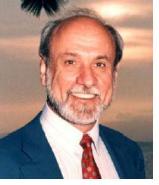 “Facing the Challenges of Parapsychology” “Facing the Challenges of Parapsychology”
Dr. Edwin C. May
Laboratories for Fundamental Research
Uncharacteristically for me, I fear that I am quite pessimistic for the near-term survivability of the discipline we call parapsychology. I define three interdependent categories into which I group the various challenges as I view them.
First, there are those challenges not of our making. For example, the clear bias against us by the mainstream journals. Probably like any other discipline, we have a set of challenges that I see as self-generated. For example, a scientist from one discipline commenting on or conducting experiments in disciplines of which they know next to nothing. The most serious challenges, however, are technical. I am not at all convinced that we, as a group of scientists, are equipped to address let alone understand when, where, and how long does psi happen? Additionally, we have a significant challenge with the negative or operational definitions of our phenomena.
In this paper I explore these various challenge types in detail. I hope that Max Planck was wrong in our case when he said: “A new scientific truth does not triumph by convincing its opponents and making them see the light, but rather because its opponents eventually die, and a new generation grows up that is familiar with it. ”[For Dr. May and Dr. Vassy’s powerpoint click here.]
Second Invited Address
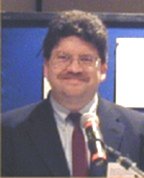 “Discussing Parapsychology at Utrecht: “Discussing Parapsychology at Utrecht:
The First International Conference of Parapsychological Studies”
Dr. Carlos S. Alvarado
Parapsychology Foundation
The First International Conference of Parapsychological Studies was held at Utrecht from July 30th to August 5th, 1953. The purpose of the conference was to present the state of the art of aspects of parapsychological research and theory, and to chart future developments. The conference was the first major project of the Parapsychology Foundation (PF), which was founded in 1951 by Eileen J. Garrett. The PF funded the meeting, which was co-sponsored by the University of Utrecht. Most of the PF’s funds came from Frances P. Bolton, the Foundation’s Vice-President.
An initial organizational meeting was held in Paris in December of 1952 to consider ideas for the conference provided by Garrett. The group decided that the event should take place at Utrecht in 1953, and that Gardner Murphy should be appointed Chair of the convention, and Michel Pobers, from the PF, its Secretary General. An Executive Committee was formed under Murphy that included Hans Bender, Emilio Servadio, S. G. Soal, Rení Sudre, and Wilhelm H. C. Tenhaeff, among others.
The congress took place at the University of Utrecht as a joint effort of the PF and the University. The daily schedule was divided between meetings of working groups and plenary sessions. The proceedings were both filmed and taped, and translation services were offered to the attendants. Seventy-eight members of the congress from 13 countries were listed in the proceedings, of whom 59% were presenters. Among them were many figures well-known in parapsychological circles such as the above mentioned members of the Executive Committee, and also Eric J. Dingwall and Gertrude Schmeidler. Some members of the conference were eminent figures in their fields, such as philosophers Gabriel Marcel and H. H. Price, and well-known psychologists Gardner Murphy, Robert H. Thouless, and D. J. van Lennep.
In addition to plenary sessions on a variety of topics the conference was organized around working groups, the main being quantitative studies, the psychotherapeutic and psychoanalytic approach, spontaneous phenomena and qualitative research, and the personality of the sensitive. There were also roundtables on parapsychology and the natural sciences, healing, and philosophical issues, and special papers on constructing a glossary of terms in several languages (Robert Amadou), and on the compilation of a bibliography of parapsychology (Gebhard Frei).
Garrett gave a pledge at the end of the conference to support parapsychology for the next five years. Committees were established that, among other things, recommended the organization of future conferences on such specific topics as philosophy, psychology, and spontaneous cases, and the compilation of an international bibliography. All of this took place years later and represents an important contribution of the conference to the field. But perhaps the PF’s grant program, and its organization of subsequent international conferences, represents the most important outcome of the conference for the future of parapsychology. The ideas for the later conferences came from the attendants at Utrecht, were brought to fruition through the work and resources of the PF. Such an important modern example of the social history of parapsychology deserves more in-depth exploration. [For Dr. Alvarado’s powerpoint click here.]
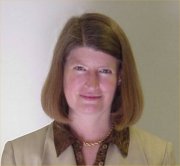 Third Invited Address Third Invited Address
“Parapsychology in the University Setting”
Dr. Deborah L. Delanoy
University of Northampton
Parapsychological researchers have a long history of association with universities, ranging from the founders of the SPR in the latter part of the 1800s to the present day. In the United States, this association was arguably most notable when William McDougal brought J.B. and Louisa Rhine to work with him at Duke University during the first half of the 20th century. Due in no small part to the influential role played by the Rhines, both at Duke and later at their independent research center, the Foundation for Research into the Nature of Man (FRNM) (now the Rhine Research Center), the majority of parapsychological research activity during the last century was conducted within the United States.
During the latter part of the 1900’s, following the lead of FRNM and aided by funding from a few wealthy benefactors and other sources, most of this research was conducted outwith universities, usually in privately funded research institutes (e.g., PRL, FRNM, Mind Science, SURF, IONS, etc.) or by government-funded research programmes, such as the remote viewing work at SRI. These non-university based research centers/programmes were tremendously productive and arguably provided many of the key parapsychological advancements of recent decades, for example, methodological and theoretical work associated with the automated ganzfeld, remote viewing and DMILS research, to name but a few. However, there was a negative side to the considerable productivity that independent research institutions/programmes enabled. With the majority of the key researchers in the U.S. choosing, perhaps understandably, to work outside of universities, the training of the next generation of researchers became an increasingly difficult task, left to the relatively few academics who remained within university settings. This presentation will also argue that another effect of this removal of parapsychology from the normal activity of universities has been an increasing negative perception of parapsychology within the U.S. by mainstream science, which is largely taught, advanced and promulgated by universities.
During this same period (latter 1900s), in Britain most parapsychological researchers adopted another approach and, by and large, embedded themselves in university environments. Perhaps the most influential individual doing this was John Beloff who worked at a university in Northern Ireland before coming to Edinburgh University during the 1960s. The reasons behind Britain taking this different approach will be explored in more depth in the presentation. While Beloff conducted some noteworthy experimental work, his most significant contribution to parapsychology was his role in creating the Koestler bequest, in paving the way for it to be accepted at Edinburgh University and in being a respected voice on the selection panel that hired Robert Morris as the first holder of the Koestler Chair in 1985. Morris had a strong vision of how the Koestler Chair could best be used to advance parapsychology and, during the nearly 20 years that he held the Koestler professorship, he substantively promoted and advanced his objectives. A key component of his vision was to advance the field by supervising Ph.D. students who would have a good training in parapsychology, as well as other key areas of psychology, who would then “be fruitful and multiply,” by gaining their own positions in other universities and subsequently training more research degree students to follow in their footsteps.
Morris’ strategy has been very successful in Britain where parapsychological research is now being carried out at over a dozen universities by academics who can trace their ancestry to his Ph.D. students. Additionally, as new Ph.D. graduates find jobs at other universities, the number of U.K. universities having staff who conduct parapsychological research is steadily increasing. This presentation will explore in depth the positive and negative aspects of embedding parapsychologists in universities. It will argue that while there are significant negatives, these are far out weighed by the positives. The presentation will conclude that this approach is the only one, other than a major theoretical breakthrough, that will serve to advance an area of study as complex, disparate and interdisciplinary as parapsychology, and which has such a relatively small number of well-trained practitioners. [For Dr. Delanoy’s powerpoint click here.]
Fourth Invited Address
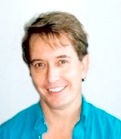 “Towards a Science of Alterations of Conciousness” “Towards a Science of Alterations of Conciousness”
Dr. Etzel Cardeña
Lund University
Parapsychology Foundation International Affiliate for Sweden
It is no longer embarrassing in academic circles to refer to a science of consciousness. Journals and conferences are dedicated to discussing such topics as the neural substrates of conscious experiences or the differences in conscious versus unconscious stimuli processing. Neglected in most of these discussions, however, is the fact that we transit among different states of consciousness even while awake, that such states organize experience, cognition, physiology, and behavior, and that what is postulated about one state may not apply at all to another.
In various works some decades ago, Tart provided bases to conceptualize states of consciousness, transitions among them, and so on. Yet, this work has had a modest impact in current discussions of consciousness with a few exceptions. Instead, the field has been plagued by conceptual disarray such as confusion of inductions with states (e.g., assuming that a meditation session produces a meditative state), or assuming that altered states remain unitary (e.g., assuming that there is one state of hypnosis). In the work dealing with the potential relationship between states of consciousness and psi phenomena, progress has likely been hindered by these obfuscations.
In this presentation I will use as an example my work on the neurophenomenology of hypnosis to illustrate various points, including how states of consciousness do not remain static, how they interact with personality traits, and how they can be integrated with neuroscientific data. I will also discuss briefly how a more useful taxonomy of states of consciousness should be based on data, rather than on the terms and concepts that we have been using for a long time. Lastly, I will discuss how a trait/state interaction may help us clarify what conditions are more likely to result in stronger psi performance. [For Dr. Cardeña’s powerpoint click here.]

Fifth Invited Address
“Self-Organised Reality”
Prof. Dr. Brian Josephson
Cambridge University
I shall describe a new approach to modelling reality, synthesising ideas of Steven Rosen, Ilexa Yardley and Stuart Kauffman. Conventionally, physics presumes a specific fundamental mathematical equation, the solutions to which represent all possible realities. The alternative that we discuss is that domains of order progressively self-organise into more comprehensive domains of order, with the longevity of complexes at the various levels being a decisive factor in determining what manifests, as is the case in biology.
This is emergent law rather than pre-existent law, and demands very different kind of thinking to the usual kind. For example, there is no universal description of what is the case but instead many descriptions, corresponding to the variety of effective divisions of the totality into figure and ground. Such descriptions are not merely ‘in the mind of the scientist’ but (again, as is the case in biology) an integral part of nature’s processes, while the determination of the nature of space is also an aspect of these processes. These ideas have clear implications for parapsychology. [For Dr. Josephson’s powerpoint click here.]
PAPER SESSIONS
Paper Session One:
What Do We Know and Where Are We Going?
Measures Of Psi
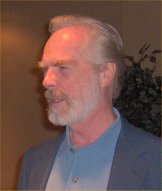 “Consciousness and Psi: Can Consciousness be Real” “Consciousness and Psi: Can Consciousness be Real”
Dr. Roger Nelson
The Global Consciousness Project
What can psi do for the scientific understanding of consciousness? Simply put, I think research in parapsychology, that is, psi research, is a leading edge for several disciplines including physics and psychology. Though many mainstream scientists discount parapsychology, a vast majority of regular folks accept the possibilities and promise of the frontier sciences in general, based on common experiences.
As most people working in psi research will agree, this background of personal experience has to be extended with sound scientific observation and experiments that amplify and clarify the phenomenological realities of psi. To the extent this is accomplished, we progressively develop an expanded, richer understanding of mind and its place in the world.
This paper is a personal sketch that touches on selected examples showing the increasingly clear contributions of psi research to the search for a fuller understanding of human consciousness. The work of a small number of serious scientists over a century has produced a remarkable array of sound, independent observations looking at similar questions from several perspectives. The results comprise compelling convergent evidence for the reality of psi. There is a real entity in the world that isn’t included in the best scientific models we have. Good evidence says these models must be expanded to accommodate consciousness phenomena.
The primary focus in this paper is on research in which I have directly participated, thus combining personal experience with rigorous science. Based on this personal, participatory engagement as a scientist, augmenting the historical record, my view is optimistic. There are excellent prospects for a maturation of research in parapsychology to become a significant contributor to consciousness studies. [For Dr. Nelson’s powerpoint click here.]
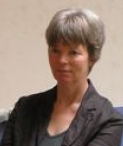
“Presentiment Research: Past, Present, and Future”
Drs. Eva Lobach
University of Amsterdam
Presentiment, also called prestimulus response, involves changes in physiological processes that are related to future stimuli. Past en present research has shown that emotionally arousing stimuli, visual or auditory, produce stronger effects than more neutral ones. The most important physiological measures used in presentiment studies are heartrate, EEG, fMRI (BOLD signal), and electrodermal activity (EDA). So far, all of these have shown evidence of presentiment, so the whole body appears to be involved. Women appear to be somewhat more sensitive to presentiment than men. Effects of meditation are mixed.
Presentiment challenges our traditional notions of time and causality. It has inspired promising theoretical contributions from physics, yielding testable hypotheses.
For the future, increasing the pace of developments in presentiment research needs the involvement of more people and more money. These are likely to be found where mainstream academia explores and questions the foundations of our scientific world view, such as in quantum physics and consciousness studies. Here researchers are more strongly motivated to use multidisciplinary approaches and are more open to contributions from parapsychological research. Also, testing presentiment hypotheses in experimental research designs that are familiar to mainstream psychologists, such as studies about learning and habituation, may encourage psychologists to better appreciate the anomalous results and to attempt to explore presentiment hypotheses themselves.
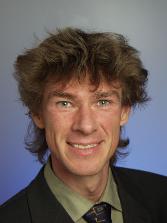 “Searching for Neuronal Markers of Psi: A Summary of Three Studies Measuring Electrophysiology in Distance Participants” “Searching for Neuronal Markers of Psi: A Summary of Three Studies Measuring Electrophysiology in Distance Participants”
Dr. Thilo Hinterberger
Freiburg University
The search for correlations in the brain activities of distant pairs of participants has become a popular research method over the last decade. This method can be seen as a tool for investigating the physiology of a postulated extrasensory or telepathic connection between related people. Such correlations would also support the idea of an entanglement of brain functions.
The report presented here summarizes the findings of three subsequent studies conducted by the author. In two of these, brain signals simultaneously recorded in remote laboratories at a distance of about 750 km were correlated. A comparison of the study outcome shows that each study bears significant correlations. The significances were weak and only replicable for the Alpha rhythm, which was increased in non-stimulated participants during the time their co-participants were exposed to pictures with affective content. After applying a potential correction for multiple testing, most significances would probably vanish.
It is discussed whether the correlations might be artefacts and how far the results may support the theory of a generalised entanglement between the brain functions of the participants. [For Dr. Hinterberger’s powerpoint click here.]
Paper Session Two:
What Do We Know and Where Are We Going?
Expressions of Psi in Life
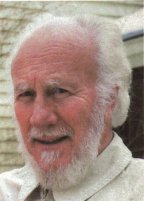 “ESP in Dreams” “ESP in Dreams”
Dr. Robert Van de Castle
University of Virginia
Throughout recorded history, dreams have always been accorded a special place of acknowledgment whenever accounts of psychic events are reviewed. In the Bible, Joseph’s insightful interpretations of the Pharaoh’s dreams played a prominent role in enabling this ruler to avert the disastrous consequences of the forthcoming plague. The birth of Christ and the necessity for him to escape from Herods’ edict to slaughter all the firstborn male children were both claimed to have been foretold in dreams. Dreams were so highly regarded two millennia ago, that an itinerant Greek dream interpreter, Artemidorus, wrote a five-volume work describing how dreams could be consulted for information about forthcoming events. The existence of paranormal dreams was confirmed and discussed by such prominent modern theorists as Freud and Jung. Well-controlled experimental work documenting the existence of psychic dreams was conducted for many years at Maimonides Hospital in Brooklyn by Stanley Krippner and Montague Ullman in the 1970s. We now know through extensive laboratory studies conducted globally that every one dreams every night and spends approximately 100 minutes engaged in this apparently rich psi-conducive state of altered consciousness.
Suggestions for future research that would potentially help us to better understand some of the conditions which appear to facilitate the psi functioning in dreams are noted below. Subjects who have developed the ability to enter fairly frequently the state of lucid dreaming, could be utilized to better understand what types of target stimuli might be more suitable in efforts to demonstrate clairvoyant dreams. Comparing the dreams of identical twins who are ego-syntonic with each other and who enjoy the status of being identified as one half of a unique partnership has been a very neglected research area.
Individuals who are romantically or spiritually linked would
similarly be likely to display impressive correspondences in their dream imagery when their intention during dreaming is to strengthen their interpersonal or transpersonal connections to the other partner. Several informal studies have strongly suggested that dream sharing or mutual dreaming is possible among various members of a dream group who have developed a strong intention to co-experience being with another dreamer in the same physical locale and engage in a similar range of activities. An impressive body of anecdotal material has accumulated to demonstrate that “dream helpers” who collectively offer to share their dream experiences to facilitate a better understanding of an emotional conflict being experienced by a targeted dreamer can succeed in such a task. Shifting from an emphasis on the influence that participation in a shared social setting can have upon individual psi dreaming, research has also been published to document that geomagnetic factors such as the presence or absence of sunspot activity can play a facilitating role for the expression of psi material in dreams. [For the illustrated version of Dr. Van de Castle’s powerpoint click here and be patient. It’s 20 megs! For a smaller but unillustrated version click here. (The bigger one is worth the wait if you can possibly manage it!)]
 “Field Investigations of Hauntings and Poltergeists” “Field Investigations of Hauntings and Poltergeists”
Dr. Fátima R. Machado
Pontifical Catholic University of São Paulo
Parapsychology Foundation International Affiliate for Brazil
Different cultural or social groups can use distinct explanations for haunting and poltergeist occurrences. Explanations for hauntings and poltergeists range from postulating that they are the result of (a) fraud; (b) misinterpretation of reality; (c) psychopathology; (d) supernatural causes; and/or (e) anomalous environmental interactions, such as possible psychokinetic and extrasensory events occurred in the context of poltergeist and haunting cases. This paper aims to state what has been previously learned about hauntings and poltergeists through field investigations and discusses the main questions that still remain without answers. It will also suggest some possible research directions for the future.
Haunting and poltergeist research is presented from an historical perspective, touching on the hypotheses that have been proposed to explain the phenomena. Various research procedures are also discussed, from methods used in earlier times upto present day utilization of psychological testing and technological mesurements of physiological and environmental variables. A brief commentary is offered on the effect of collaborative participation of psychics in field investigations.
In general terms, according to the patterns observed from field investigations, the fundamental difference between hauntings and poltergeists person-centered and hauntings are place-centered. However we could say that this is a didactic distinction that can not always be used to precisely classify some of the cases that have been reported over the years. To address this, different uses and meanings for the terms haunting and poltergeist and the consequent implications of terminology for investigative approaches will be discussed.
Suggestions are made to answer still unresolved questions that face researchers who conduct field investigations. The importance of such research is stressed for the development of experimental research, considering the broad context in which hauntings and poltergeists are examined. Te experiencier's personal life comes into play as do psychophysiological conditions and social relations which must be considered together with environmental variables. True interdisciplinary research is needed. To accomplish this, a network of field investigators should be created, bringing together researchers from different areas of science and the humanities, who operate from different perspectives, and who are willing to devote themselves to spontaneous case research. The importance of this kind of collaboration is emphasized given the potential for knowledge the intergration of field and experimental research can bring. [For Dr. Machado’s powerpoint click here.]
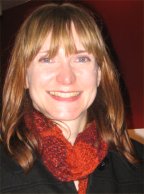 “Personality Variables in Spontaneous Psi Research: Contextualizing the Boundary Construct in Its Relationship to Spontaneous Psi Phenomena” “Personality Variables in Spontaneous Psi Research: Contextualizing the Boundary Construct in Its Relationship to Spontaneous Psi Phenomena”
Dr.Christine Simmonds-Moore
Liverpool Hope University
This paper will argue that anomaly prone-ness is fundamentally tied to the concept of boundary thinness. Boundary thinness is a term borrowed from Hartmann (e.g., 1991) and refers to the extent to which neural structures, cognitive processes (e.g., representations), social interactions (e.g., empathy) and cultural processes (e.g., focus on the group rather than the individual) are inter-connected rather than separate.
A hierarchical/all levels approach to boundaries is important as different types of boundaries might relate differently to spontaneous psi experiences. Some forms of boundary thinness may relate only to pseudo psychic experiences, while others may relate to a mixture of pseudo and genuinely psychic experiences, whilst others may be potentially related to instances of genuine psi. To date, there are few experiments which empirically explore how each form of boundary thinness might impact upon spontaneous psi experiences.
It will also be argued that several superficially disparate psychometric measures and situations which are associated with psi experiences are actually underpinned by boundary thinness. In addition, it will be argued that boundary thinness is simultaneously a personality trait and a state of consciousness. As such, those who are hard wired to be boundary thin should perhaps be reconsidered to be individuals who are more likely to enter boundary thin states. This may allow for a parsimonious understanding of psi experiences — which can and do occur in everyone, but may be more likely among certain individuals. In addition, this approach allows for greater insight into the possible manipulation of boundary thinness, with a view to gaining greater control over anomalous experiences. For example, a system that is too “thin” may be more associated with being overwhelmed with psi experiences.
Following this, it will be argued that there are actually healthy and unhealthy forms of one measure of boundary thinness (positive schizotypy). This may only be ascertained by exploring how positive schizotypes score on other psychometric variables. Interestingly, “healthy schizotypy” has recently been found to relate to evolutionary fitness. As psi is associated with boundary thinness, it will be argued that psi may be the result of an indirect evolutionary selection. This gives greater understanding regarding the purpose of psi as well as the continued existence of the schizophrenia gene in the gene pool.
Finally, this paper will argue that personality and psi experiences should be considered in terms of interactionism/situationism, and address how other variables may interact with boundary thinness in terms of the expression of psi phenomena. [For Dr. Simmonds-Moore’s powerpoint click here.]
Paper Session Three:
What Do We Know and Where Are We Going:
Clinical and Medical Connections
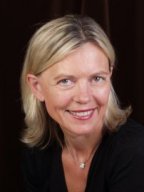 “Clinical Parapsychology: Today’s Implications, Tomorrow’s Applications” “Clinical Parapsychology: Today’s Implications, Tomorrow’s Applications”
Dr. Martina Belz
University of Bern
The relationship between spontaneous extraordinary or exceptional experiences (ExE) and psychopathology has been recognized as problematic from the earliest days of psychical research and the field is still riddled with controversy today. The question if ExE are merely symptoms of psychopathology that are just explained paranormally by the person and/or his environment or if these experiences are based on genuine "paranormal" processes is an ongoing yet unresolved debate between parapsychologists, the clinical sciences and the people who report these experiences. The answer to this question isn’t trivial at all neither for the clinical sciences nor for the individuals who seek help and assistance in understanding these experiences and coping with their consequences.
A survey of the effects of ExE on people’s lives (Milton, 1992) found that there is a need among experients to receive guidance and reliable information concerning these experiences but this need seems rarely adequately met. Although the necessity for a specific information and counseling service in the field of parapsychology has been increasingly recognized in the last twenty years, especially among the representatives of scientific parapsychology (Solfvin, 1995) professional counseling services dealing with such experiences are still extremely rare. This is even more the case when we look for approaches in clinical parapsychology that meet the standards for Empirically Supported Treatments (EST) as required for other areas of counselling and psychotherapy. Taking into consideration that on the one hand there is quite some overlap between the symptoms listed in the categorical systems of the clinical sciences for psychopathology and typical elements of ExE and that on the other hand there is only marginal overlap between researchers and clinicians in main stream clinical psychology and clinical parapsychology it is time to bring the fields closer together.
Clinical Parapsychology has just started to fulfill some of the standards and definitional criteria for professionalism that have become common for clinical psychology and the requirements which are necessary for professionalism of (clinical) psychological interventions. So it is about time to bring together the best of two worlds if we take the need for counseling and therapy for people with ExE serious.
The first step would be to think about the name of the field. In my opinion it would make much more sense to talk about Clinical Psychology for people with ExE instead of Parapsychology. This would fit in much better with fully dimensional models in the context of psychological health that are currently discussed than the actual classification systems. Another important advantage of this label leaves the judgment about the possible paranormal nature of the experience open. As we have shown above ExE are based on retrospective reports and the subjective judgment of the experient with all the known problems and individuals having a wide range of non classifiable experiences for which they need help in understanding and coping. This understanding would open the field also for those clinicians who have an open or even skeptical attitude towards the paranormal.
Independent of their worldview they will see clients and patients with these experiences who need help and advice. If we can offer an approach that does not demand a certain worldview and belief system but is useful for every expert with an open mind we will be more successful in bringing the field ahead and helping those who really need it. [For Dr. Belz’s powerpoint click here.]
 “Spirituality: The Legacy of Parapsychology” “Spirituality: The Legacy of Parapsychology”
Dr. Harald Walach
Univerity of Northampton
Parapsychology was founded as a counter movement to the rising materialist paradigm in the 19th century. Adopting the methods of the natural sciences, it tried to prove the direct influence of consciousness on matter. After 125 years this mission must be declared unaccomplished. Surveying the database of parapsychological research it is obvious that it is too fickle to convince sceptics. Although there are enough exceptional findings, it is difficult to pinpoint them by replication experiments. This is the signature of a category of effects which we call effects of generalised entanglement, predicted by a theoretical model analogous to quantum theory. Using this perspective, parapsychological effects can be understood, and the original aim of the founding fathers can be recovered. For generalised entanglement is a formal and scientific way of explaining spirituality: alignment of an individual with a whole, which according to the model inevitably leads to non-local correlations. [For Dr. Walach’s powerpoint click here.]
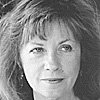 “Distant Healing Intentionality and Brain Function in Recipients, using fMRI Analysis” “Distant Healing Intentionality and Brain Function in Recipients, using fMRI Analysis”
Dr. Jeanne Achterberg
Saybrook Graduate School & Research Center
Traditional healing systems and energy medicine practices, including prayer, transpersonal imagery, Healing Touch, and Qi Gong are predicated on the belief that healing can occur at a distance and when there is no direct contact. A nonlocal connection of consciousness of two or more people—often termed Distant Healing Intentionality (DHI)—is implied, but not well accepted in mainstream health care.
This paper outlines a foundation for the demonstration of this phenomenon, using the technical measurement of brain activity and function in sensory isolated individuals. Healers from various traditions trained in DHI were paired either with someone they knew and felt an empathic bond, or with someone they did not know. The recipients received an fMRI scan; DHI was sent at random intervals, unknown to the person receiving the scan. The results point to a role of human connection or bonding in terms of activation of brain areas and function; suggesting that care and compassion may be vital components of the healing process and of the transmission of thoughtful intention.
Possible neural pathways, limitations of the research, and a mechanism based on Entanglement Theory are proffered. Directions for further research, using a similar paradigm, are proposed, including subsequent analyses based on the possibility of anomalous anticipatory responses, the role of mirror neurons, and a cross comparison of different types of healing modalities in a larger sample. The conclusion from the work is that care and compassion are vital components of the healing process and of the transmission of thoughtful intention. [For Dr. Achterberg’s powerpoint click here.]
Paper Session Four:
What Do We Know and Where Are We Going?
Theories, Implications, New Directions
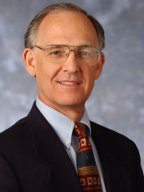
“There is No Mind/Body Problem in Parapsychology”
Dr. Hoyt Edge
Rollins College
I make the intentionally provocative claim that there is no mind-body problem in parapsychology. I do so because I think we need to rethink this “problem.” In an important sense the mind-body problem gave rise to parapsychology, and parapsychology traditionally has believed that its data has supported dualism. My basic argument is that both dualism and the mind-body problem arose within a certain context, the rise of modernism in science and philosophy, and were formulated in this modern sense by Descartes. As such, it proposes a specific view of both mind and of matter, the definitions of which are mutually interdependent. Since both concepts are archaic, I believe, we must conclude pragmatically that we no longer have a mind-body problem in this traditional sense. However, there are still characteristics of mentality that need to be accounted for, which I specify. I then discuss how parapsychology fits into this picture and suggest directions for its future. [For Dr. Edge’s powerpoint click here.]
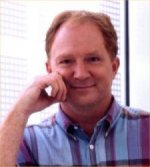 “Empirical Pictures of Time” “Empirical Pictures of Time”
Dr. Richard Shoup
Boundary Institute
Nothing has been more perplexing or controversial in the study of psi phenomena or in modern physics than the concept of Time. We discuss some aspects of current physics and of psi research that are particularly relevant to our understanding of Time and its meaning. Several unexpected experimental anomalies are presented that may give us clues about the nature of retrocausal influence. We show how some retrocausal effects and other anomalous phenomena might be explained without major injury to existing physical theory. A modified quantum formalism can give new insights into the nature of quantum measurement, randomness, entanglement, causality, and Time itself. The origin of Time and Clocks can be understood and developed from simple logical foundations. We also give some suggestions for future directions in experimentation, development of theory, and for involvement with the science community.[For Dr. Shoup’s powerpoint click here and then click on “slides”.]
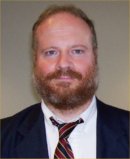 “Physics with an Open Mind” “Physics with an Open Mind”
Dr. York Dobyns
Princeton University
Parapsychological research is frequently criticized on the grounds that its findings contradict the laws of physics. In reality, most of these criticisms are erroneous. When they do not result from simple carelessness or error on the part of the critic, they usually result from simplistic misconceptions about what currently known natural laws actually permit. The lack of inverse-square distance dependence is cited as proof that parapsychological phenomena cannot be real, despite the fact that such commonplace phenomena as signal transmission show no distance dependence so long as the signal-to-noise ratio is high enough for the signal to be distinguished reliably from the noise. The existence of precognitive effects is rejected as a physical impossibility because it violates causality, despite the fact that modern research has shown that unidirectional causality is not required for a consistent science of physics.
Examination of the phenomena studied by parapsychology from a physical perspective shows that only one reported phenomenon, “macro-psychokinesis” or “macro-PK,” is unambiguously a violation of currently understood physical law. All other categories of phenomena can potentially be accommodated by extant theories. Moreover, the well-known incompatibility between general relativity and quantum field theory indicates that at least one major revision of physical theory must still be made. Therefore, it is not unreasonable to suggest that conflicts between observational evidence and theory should still be resolved by revising the theory rather than rejecting the data.
Directions for future research suggested by physical considerations include: Retrospective meta-analysis of the physics literature for cases where evidence for psi effects have gone unnoticed by the physics community, which is not accustomed to considering such effects. Intensive examination of macro-PK claims to establish the reality or otherwise of this phenomenon and conditions for its reliable production. Examination of the relation of psychic observation, e.g. remote viewing, to the quantum measurement problem. [For Dr. Dobyn’s powerpoint click here.] |


 “Facing the Challenges of Parapsychology”
“Facing the Challenges of Parapsychology”
 “Discussing Parapsychology at Utrecht:
“Discussing Parapsychology at Utrecht:
 Third Invited Address
Third Invited Address
 “Towards a Science of Alterations of Conciousness”
“Towards a Science of Alterations of Conciousness”

 “Consciousness and Psi: Can Consciousness be Real”
“Consciousness and Psi: Can Consciousness be Real”

 “Searching for Neuronal Markers of Psi: A Summary of Three Studies Measuring Electrophysiology in Distance Participants”
“Searching for Neuronal Markers of Psi: A Summary of Three Studies Measuring Electrophysiology in Distance Participants”
 “ESP in Dreams”
“ESP in Dreams”
 “Field Investigations of Hauntings and Poltergeists”
“Field Investigations of Hauntings and Poltergeists”
 “Personality Variables in Spontaneous Psi Research: Contextualizing the Boundary Construct in Its Relationship to Spontaneous Psi Phenomena”
“Personality Variables in Spontaneous Psi Research: Contextualizing the Boundary Construct in Its Relationship to Spontaneous Psi Phenomena”
 “Clinical Parapsychology: Today’s Implications, Tomorrow’s Applications”
“Clinical Parapsychology: Today’s Implications, Tomorrow’s Applications”
 “Spirituality: The Legacy of Parapsychology”
“Spirituality: The Legacy of Parapsychology”
 “Distant Healing Intentionality and Brain Function in Recipients, using fMRI Analysis”
“Distant Healing Intentionality and Brain Function in Recipients, using fMRI Analysis”

 “Empirical Pictures of Time”
“Empirical Pictures of Time”
 “Physics with an Open Mind”
“Physics with an Open Mind”


